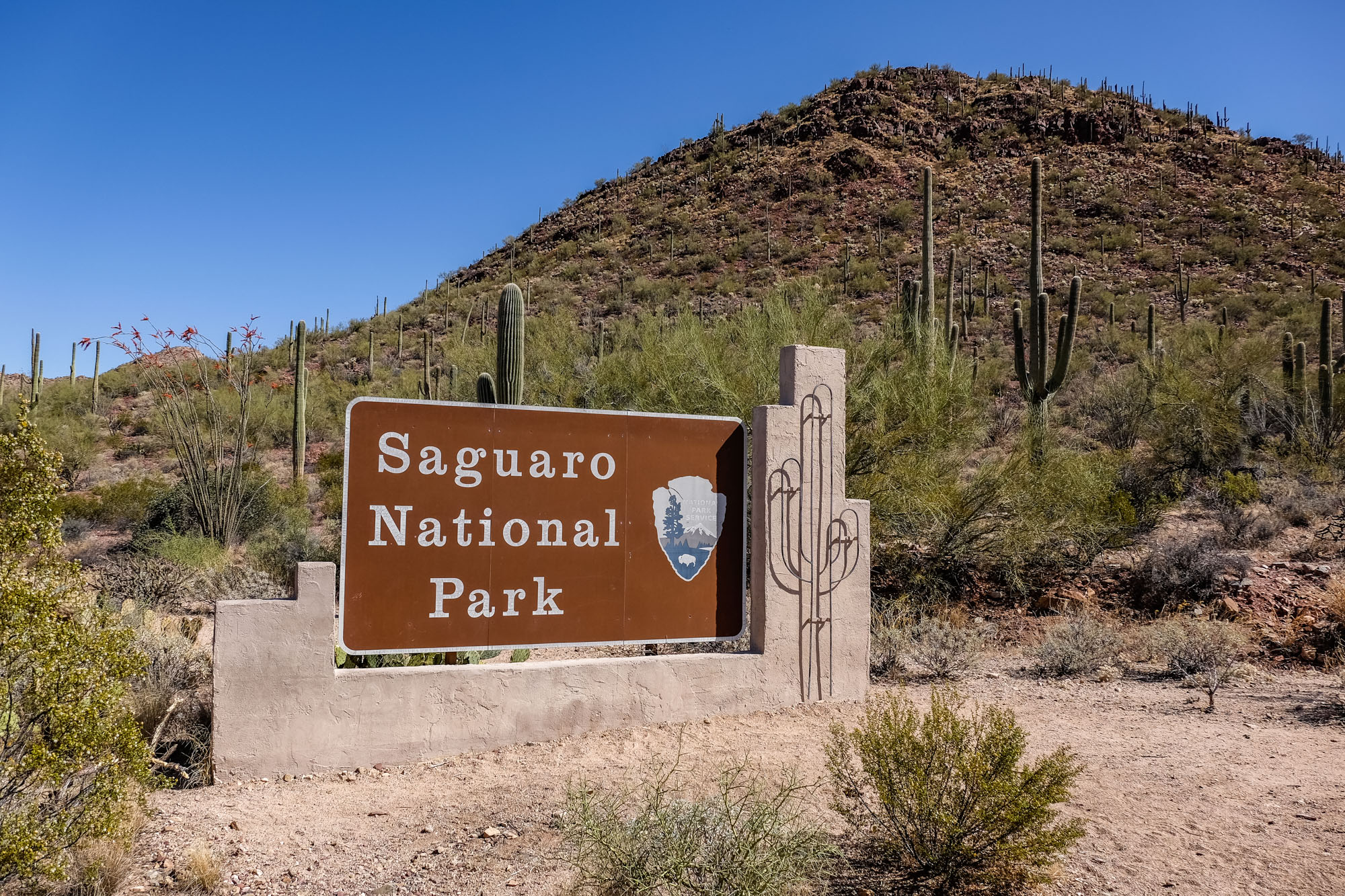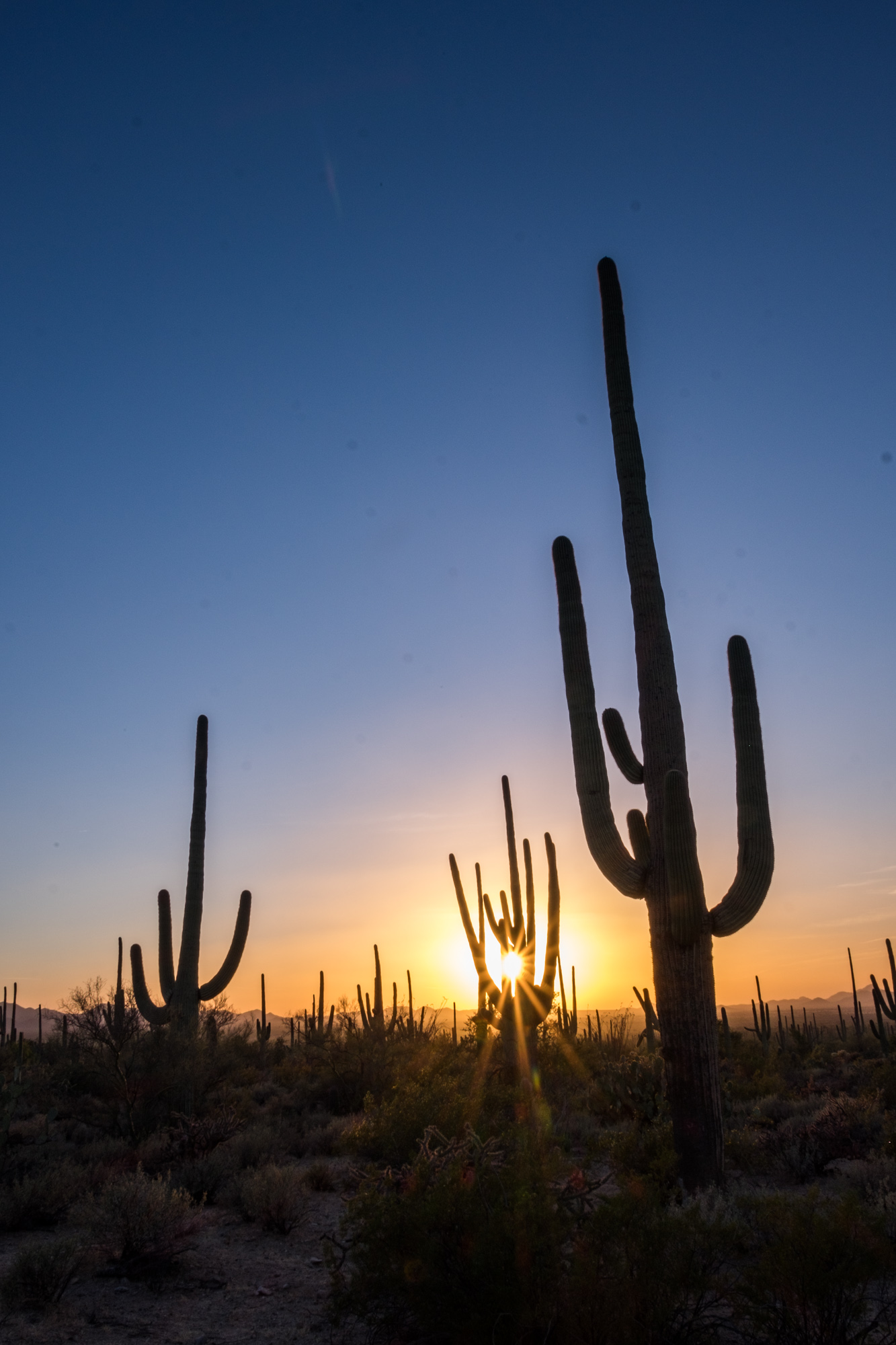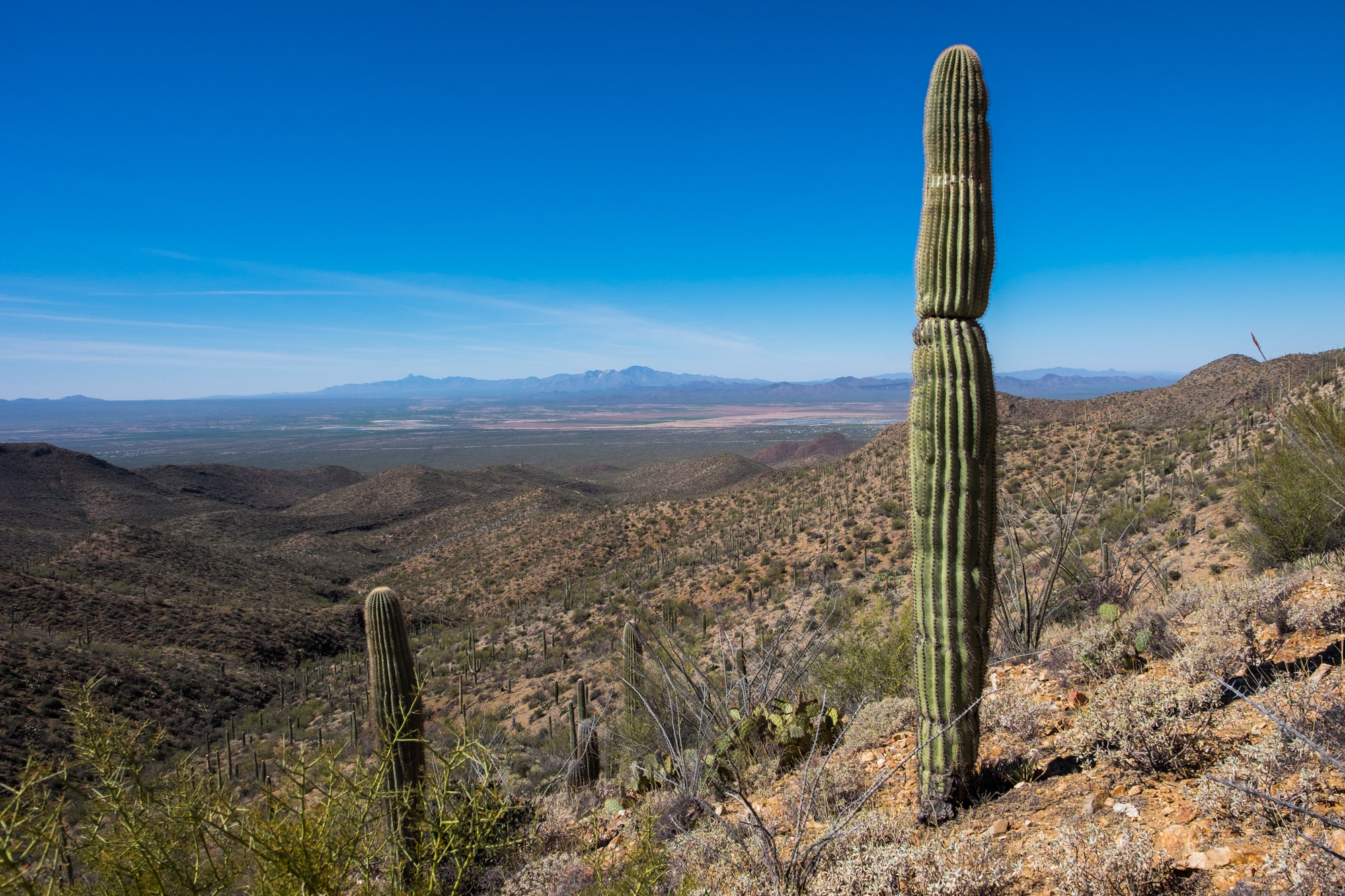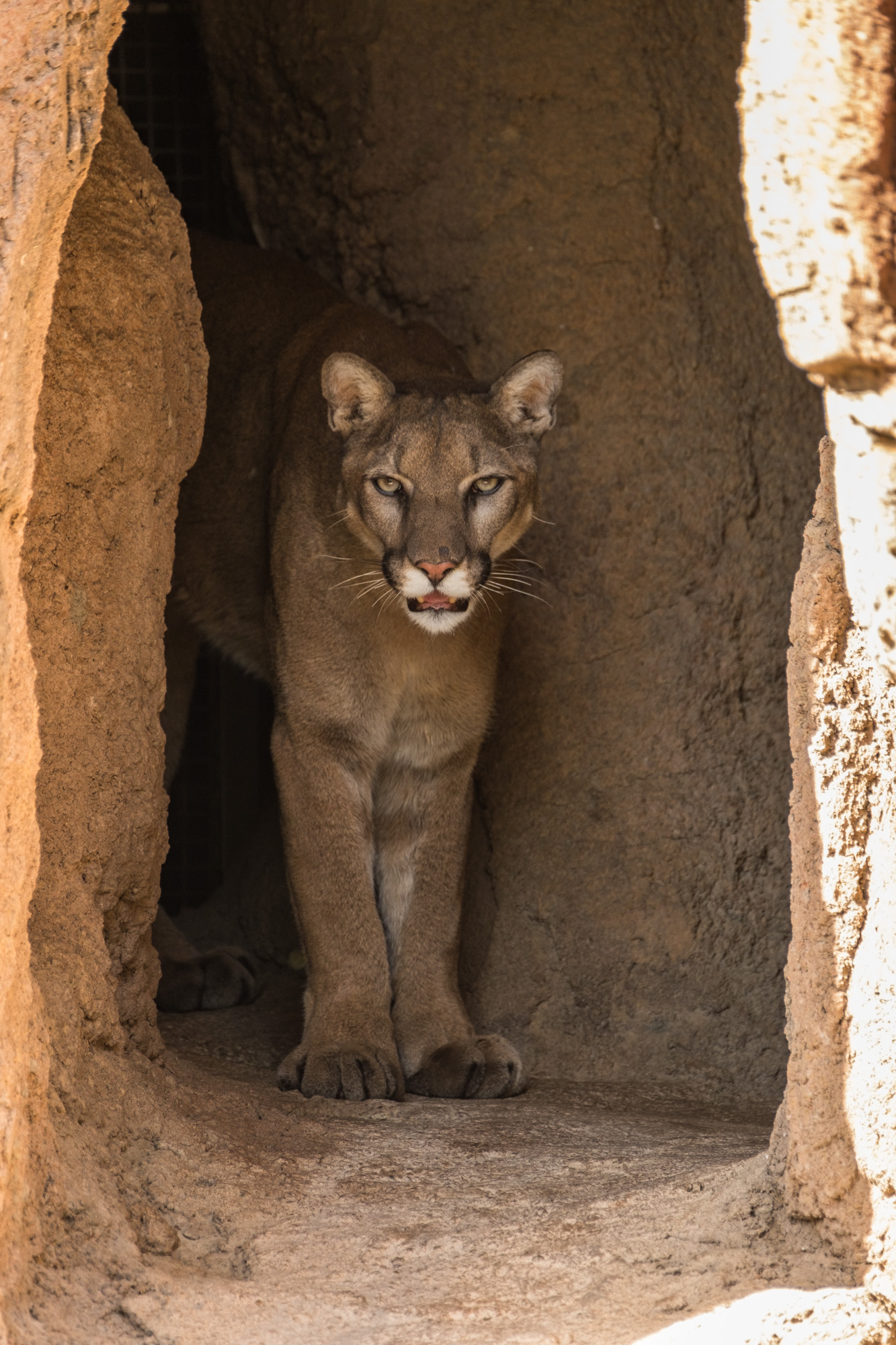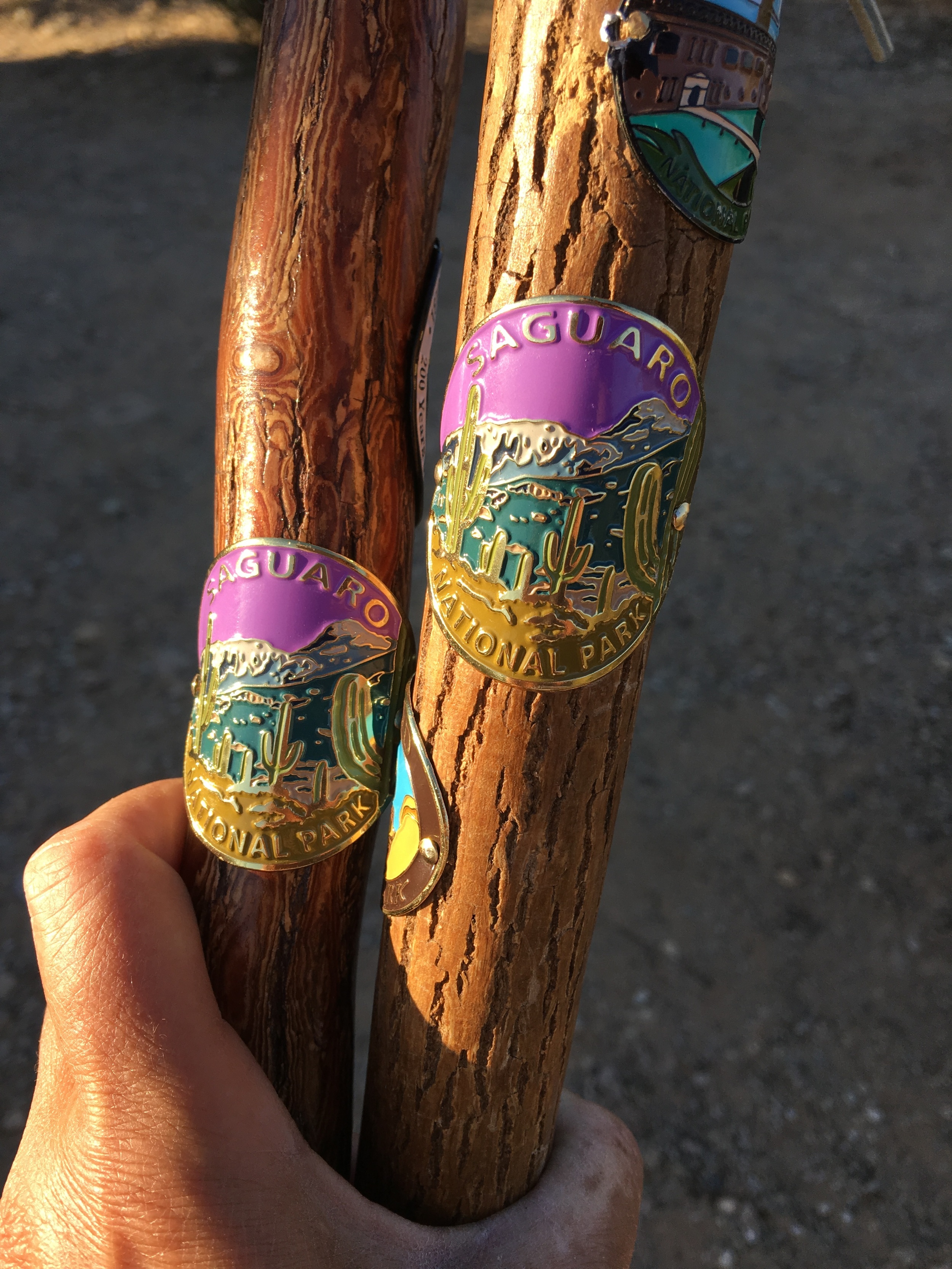Saguaro National Park, Arizona, USA | Park 16/59
“Stand tall.
Reach for the sky.
Be patient through dry spells.
Conserve your resources.
Think long term.
Wait for your time to bloom.
Stay sharp!
”
8 Things We Loved At Saguaro National Park
The magical saguaro tree standing tall on the desert skyline.
There is no symbol more emblematic of the American southwest than the saguaro tree—standing tall with two arms reaching out from it toward the sky. If you've ever purchased El Paso brand Tex-Mex products at the grocery store, you've seen at least some version of this tree. (It's worth noting here that saguaro trees don't actually grow in El Paso.) With countless brands using artful renditions of this cactus to visually describe the southwest, it makes seeing the real thing up close very surreal. This park takes the cake in terms of sense of place.
Instead of looping our experience into one long narrative, we’re going to switch it up for this article and neck down on our very favorite aspects of this park. These are listed in no particular order, and a couple of them don’t even live inside the park—but they did enhance our Saguaro National Park experience, so we’re including them. Without further ado, here it goes:
All set up just in time for sunset... Catching a minute to look just with our eyes on Cactus Loop Drive in the Rincon Mountain District, Saguaro East.
1. Two parks in one. Saguaro National Park is split into two sections—the Tucson Mountain District sits west; the Rincon Mountain District sits east; and the city of Tucson and its 1-million residents sits in between the two. While the two sides of the park bare the same name and share likeness in desert landscape, they are quite different in terms of nuance. Saguaro West is home to the dense saguaro forests that rise from the hillside. Here you will find low-desert grasslands, shrubs, and densely populated saguaro forests. Saguaro East is the area of parkland originally preserved by Herbert Hoover when he dedicated it as a monument in 1933. It is the jumping off point to backcountry and the habitat of elusive wildlife such as the rare Gila monster and the Caoti. Here you will find high-elevation conifer forests, in addition to saguaros and desert mainstays such as cactus and wildflowers. In a general sense, Saguaro West is more manicured; Saguaro East is wilder.
Stef pushing to the top of Tucson, Wasson Peak at 4,687 feet, along the Kings Canyon Trail, Saguaro West.
2. Big hikes. In Saguaro West, we found our big adventure along the Kings Canyon Trail. The beauty of this hike is that it connects to several trails throughout, allowing you to choose your own adventure. We chose to push past the 7-mile roundtrip loop and blaze in another direction, extending the whole of our experience to 11 miles. This was kind of an accident—a happy accident though, as it led us to the highest point in Saguaro West: Wasson Peak standing at 4,687 feet and towering above Tucson. (Friends in Tucson, you know who you are, we waved and said "hello" from above!)
When you think of the American southwest, you are most likely envisioning Saguaro National Park.
3. Iconic scenes to photograph. We figured that we could capture an iconic shot of the lone saguaro tree in the forested west so we started there. However, the denseness of the trees made getting a shot of an isolated saguaro a difficult (but not impossible) challenge. Ultimately, we found our favorite saguaros to photograph on the east side. Either is great though, especially against a backdrop of gradient pink and blue desert skies. Photography here is all about capturing desert silhouettes, and those exist everywhere you look.
4. Scenic drives. The Cactus Forest Loop in Saguaro East is a paved, one-way, 8-mile road with pull offs that overlook the valley—an easy way to pick and find easy trails into the wilderness. When we found our sunset stop, bikers blazed passed us hollering "hey, nice spot!" and the like as we set up camp chairs perched above the valley. Connecting with people who are enjoying the park too is by far one of the greatest aspects of this journey.
This isn't Wally the Airstream, but we found many caravan friends at the Gilbert Ray Campsite in Saguaro West. Love the way it is all nestled away, protected by trees.
5. Rock-star campgrounds. For a full-time RV-er, it says a lot about a campsite if it doesn’t have wifi or electricity and you still prefer to stay there more than any other place. The Gilbert Ray Campground was perfect—inside the park and nestled inside saguaro trees and desert shrubs with the mountains in the background cradling the moon. In point #3, we talked about finding the best sunset spots in the park and this was without a doubt one of them. We were able to take in all of the desert beauty without leaving Wally the Airstream's doorstep.
6. Close proximity to great Tex-Mex food. We don’t want to be mean, but Tex-Mex in DC sucks. Sorry to all who disagree, that is our opinion after 8 years of living there. Tucson on the other hand has one restaurant that made some of the best Tex-Mex either of us had ever had. I don’t know if that’s just because absence makes the heart grow fonder or what but… The authentic mariachi, perfect house made tortillas, margaritas made from real margaritas—no joke: best ever Tex-Mex food.
A beautiful Big Horn Sheep at the Arizona-Sonora Desert Museum.
7. World-class wild habitats. There is boundless wildlife living inside of the national park, and as wildlife is generally elusive, could be hard to spot during the daytime when they tend to hide from heat and visitor traffic. A worthwhile remedy for all of those wildlife lovers out there is a visit to one of the most popular and most visited museums in the United States, just steps from Saguaro National Park in Tucson. The Arizona-Sonora Desert Museum gave us one of the most awesome experiences we've had yet this year, and we've seen and done a lot already... Read more about our visit to the Desert Museum in our “Stops Along the Road” section.
Sharp detail of a saguaro during sunset.
8. The comical saguaro tree! The saguaro tree is the largest cactus in North America. They may look like loving characters from a child’s storybook, but these are some serious trees. They can weigh up to nearly 5,000 pounds and live up to 200 years old. We spent a lot of time looking for “the perfect tree” and determined that there is a tree for everybody. Maybe you like the perfect-looking two-armed saguaro, maybe you like the saguaro with many wrangled arms reaching out in all directions. Their differences make them fun to photograph, characterize, and admire.
This is a go-back park. Can't wait to go back.
“What makes the desert beautiful is that somewhere it hides a well.”
Quotable Images
Fact Box
91,445 acres in the Sonoran Desert
Official name: Saguaro National Park
Established: October 14, 1994
Location: Southeast Arizona, on both the west- and east side of Tucson.
How the park got its name: Saguaro National Park is named after the Saguaro cactus that rises from the desert floor. It is pronounced with a silent g — suh-wahr-oh.
Iconic site in the park: The Saguaro tree is the undisputed champion of the American southwest, so it is only fitting that the tree itself should stand as the most iconic site in the park. They grow slowly, spouting their arms at around 75 years of age. They live long for a cactus, up to 200 years. They stand large—as high as 80 feet tall and weighing up to nearly 5,000 pounds. There are 1.6 million Saguaro cactus decorating the desert flat, ridges, and skyline ... 1.6 million reasons to visit this beautiful park near Tucson.
Accessible Adventure: Head to the Rincon Mountain District (Saguaro East) to drive or bike the 8-mile scenic Cactus Forest Loop Drive. There are picnic areas to stop at along the route as well as several short interpretive trails. Note that this drive closes when the sun goes down and those hours are enforced by the Park Service. Let them get home to dinner, folks! Be prepared to pack up as soon as twilight begins and enjoy the peaceful drive out while watching for wildlife.
Big adventure: For Big Adventure, we’re digging into big hiking on both sides of the park.
In Saguaro West, we found our big adventure along The Kings Canyon Trail. What we loved about it is that there are several offshoot trails, providing options to shorten or lengthen the hike. The direct trail is 7 miles round trip and leads to the highest peak in the Tucson Mountains: Wasson Peak standing at 4,687 feet overlooking all of Tucson. We got there eventually, but packed in another few miles by exploring the Sendero Esperanza Trail as well.
The big hiking adventure in Saguaro East is en route to Manning Camp, a 16-mile, one-way hike gaining 4,000 feet in elevation. Obviously, this is too far for 99% of people to hike in one day, so add to your fun backcountry camping stops along the way.
General note: As always before heading out on any hike into the wilderness, check with the Visitor Center to get a handle on conditions, weather, and bring all the water you will need with you just in case there is no water along the route (for example, there isn't any in Saguaro.)
Did you know?
Saguaro National Park is located in the Sonoran Desert, crossing southern California, northwestern Mexico, and of course, Arizona.
The state flower of Arizona is the saguaro cactus bloom.
The saguaro cactus bares fibrous fruit that looks like small red flowers. It is said to be crunchy and taste sweet.
The Tohono O’odham Nation of American Indians have lived in the region for thousands of years. Tohono O’odham translates to "Desert People."
Great news! The saguaro cactus is not presently listed among threatened or endangered species. Strict laws are in place to prevent harvest and demolition of the cactus so that they can live on for the enjoyment of future generations of humans, plants, and wildlife.
For animal lovers—desert wildlife abounds in this park. Among the critters and creatures you can find here: six species of rattlesnakes, bobcats, mountain lions, black bears, raccoons, coyote, foxes, javelina, badgers, skunks, rabbits, roadrunners, woodpeckers, and the rare and elusive Gila monster and Caoti.
More than 1,162 species of plants can be found in the park.
The Navajo Indians call the coyote, a species that thrives in the Sonoran Desert, "God's Dog" because of their impressive and seemingly unstoppable survival skills. We saw a pack of coyote traveling through the park and it was so amazing that we didn't even photograph it (sorry!), we just took in the moment.
There are six backcountry campgrounds in Saguaro National Park. “Backcountry” is code for permit required. Head to the Visitor Center (VC) to learn more and to plan your visit.
Beautiful petroglyphs are etched into rocks in a wash near the entrance of the Kings Canyon Trail (the VC can give you the exact location.) Mind your step on the way down, as of spring 2016, there is a swarming beehive at work in the center of the rocky ledge walkway.
For history buffs—hike the easy one-mile loop on the Freeman Homestead Trail to learn more about the culture of homesteading.
There are more than 140 mine sites inside the park managed by the National Park Service. You can't go in them, of course, because it's dangerous and illegal, but the history of mining in the area is a cool thing to learn about whether visiting or not.
In August, high-schoolers from the Tucson area will participate in the National Park Service Centennial Youth Summit of Southern Arizona. This centennial event allows young adults to examine, explore, and contribute to these important places within our country through ideas and action. We are including this to point out just one example of how the centennial anniversary is influencing next-generation support and advocacy. More good stuff from the next-gen!!
Saguaro was designated as a National Monument under President Herbert Hoover in 1933, and was the first monument of its kind meant for the preservation of a species, rather than area of land. Portions of parkland were added in the 1960s by J.F.K., then increased by Congress in the 1970s. When Saguaro became a U.S. National Park in 1994, the protected area was increased yet again. Today, there are more than 91,000 acres for us to go play in. Enjoy!!
Saguaro West is where a denser population of the Saguaro trees live.
Saguaro East lis the prime spot to head off into back country.



